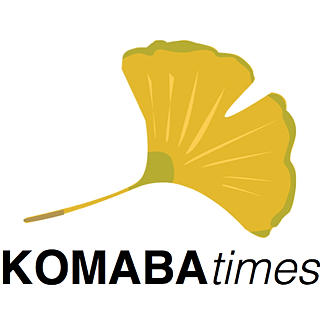Surprising Findings Underground
- Komaba Times
- Jun 21, 2017
- 2 min read
Updated: Oct 18, 2019
By HANNA HIRAKAWA
Tokyo is famous for its numerous cultural and art museums, but who would have thought to find some underground?
For commuters in Japan, the most common mode of transport is the public train system operating both above and below ground. Maneuvering through these packed stations can be an exhausting drag during rush hour, especially in the morning. However, some of these stations show a different face during other hours of the day, when intense human traffic subdues. The change is something art lovers would definitely take delight in.
Imagine passing by an entire wall of displayed artwork on your way to school or work. Well, this actually exists in reality; immediately stepping out from the Takashimaya direction ticket wicket at the Shinjuku-sanchome station, you are greeted by Hiroshi Senju’s Waterfall, a vast image of the original painting. Wandering tourists and businessmen on the way home stop by to take in this stunning view. The curious exhibition continues on at other subway stations of the Fukutoshin and Ginza lines. At the Nishi-Waseda station, you will be awed by Akira Yamaguchi’s Figure of Underground Railroad, a brilliantly illuminated masterpiece of stained glass. Even through the late night hours the artwork glows with a soft golden light, welcoming home those who live nearby the station.

Caption for hirakawa_Waterfall.JPG: Senju Hiroshi’s Waterfall, an exhibition captivating visitors on the go. 2017. Photograph by author. Tokyo.

Caption for hirakawa_Waterfall_cropped.JPG: Close up view: Softly lit Waterfall whisks viewers to a mystical world. 2017. Photograph by author. Tokyo.
Each artwork imbues each station with a distinct ambiance, but why showcase them underground, let alone at subway stations of all places? The artistic displays are managed by the Metro Cultural Foundation (MCF), a separate entity branching from the transportation-running Tokyo Metro system. This organization manages the Subway Museum and supports other public events such as the Metro Concert and Metro Cultural Exhibitions. Their goal is to contribute to the lively culture of Tokyo and in effect, to enrich people’s daily lives through music, art, traditional culture, and etiquette education.

Caption for hirakawa_hope.JPG: Souun Takeda’s Hope exhibits energy with a modern taste. 2008. Photo by Tokyo Metro Co. Tokyo
So, what was their aim in installing these artworks? According to MCF, the purpose behind each artwork or series differ. Some of the works are distinguished more so as “public art” and thus seem to place less emphasis on their creators. The previously mentioned Figure Underground, Kei Amatsu’s Fly to the Universe at the same Nishi-Waseda station and Kenji Yoshitake’s Sunny to Rain to Sunny at Kita-sando station are categorized as such works. Other stations feature pieces that clearly mark the artist’s style, providing viewers a rare opportunity to appreciate art of well-known artists. Among such works are the Waterfall and Souun Takeda’s Hope, an energetic work of Japanese calligraphy.

Caption for hirakawa_Figure of Underground Railroad.JPG: Akira Yamaguchi’s Figure of Underground Railroad welcoming visitors with a soft glow.
2008. Photo by Tokyo Metro Co. Tokyo.
Therefore these days, hopping onto the subway is an alternative way to enjoy art in this busy city. Anyone who is up for a unique art museum experience or simply for an underground adventure can grab an all-day metro pass and be on the go.





Comments